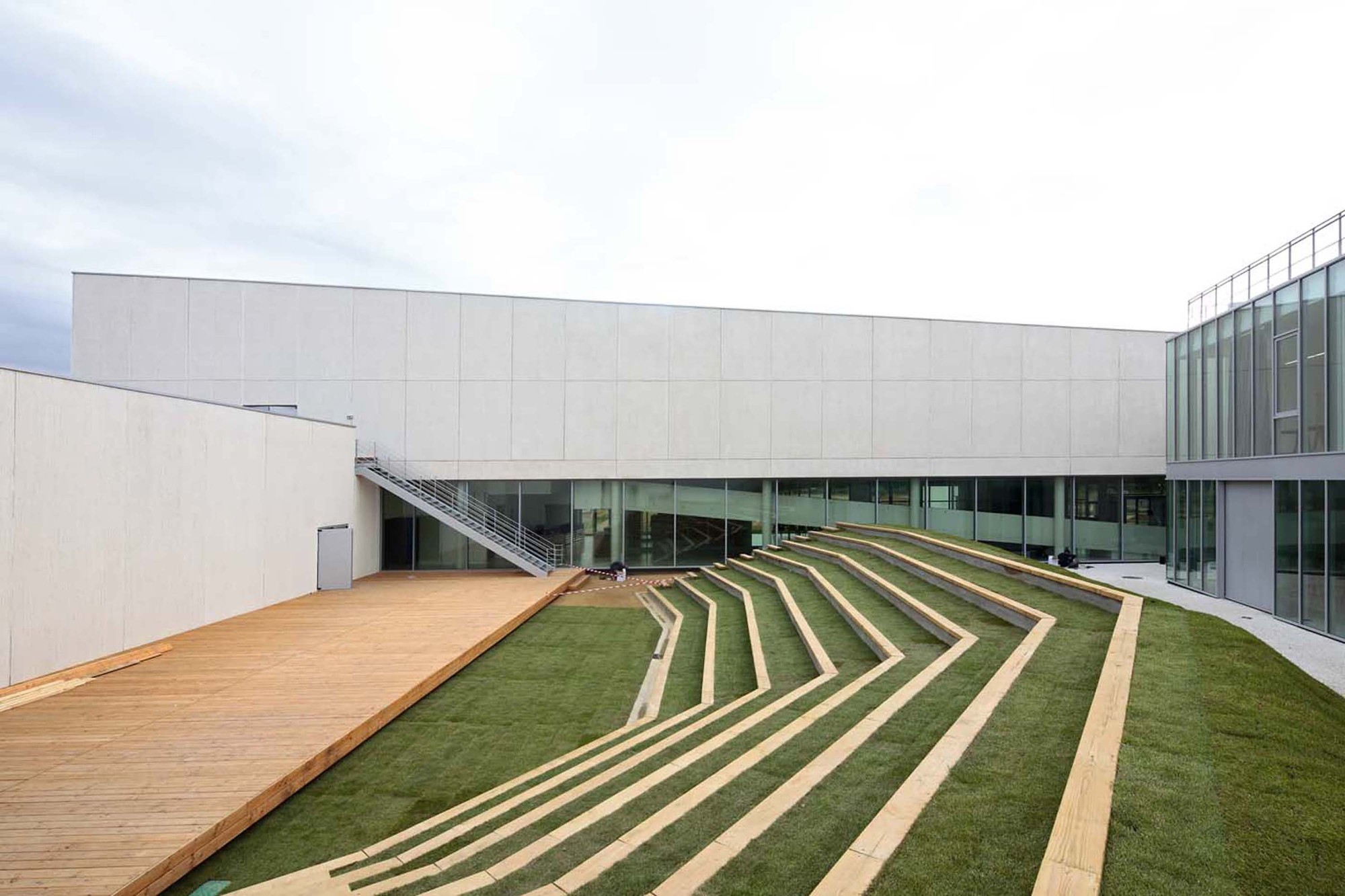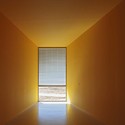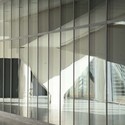
Media Library Ris Orangis / DE-SO
Vertbois Building / Moussafir Architectes + Inside Outside Architecture

- Area: 1134 m²
- Year: 2023
-
Professionals: Malishev-Wilson
LV 2 Factories in France / DE-SO
Living on the Roof / rotunnojustman

-
Architects: rotunnojustman
- Area: 122 m²
- Year: 2021
-
Manufacturers: Fermacell
-
Professionals: Metz Ingénierie
Les Domaines Ott Château de Selle / Carl Fredrik Svenstedt Architect | CFSA

-
Architects: Carl Fredrik Svenstedt Architect | CFSA
- Area: 4370 m²
- Year: 2017
-
Manufacturers: Technal, Birch, Carl Fredrik Svenstedt, Pierre du Gard
-
Professionals: Beccamel Mallard, Ingénérie 84
10 Types of Roofs and the Possibilities of Slate Tiles

Every child has drawn a house. Perhaps a sunny day with some clouds, a leafy tree, a family with a dog, low wooden fences, or even a car. But in these drawings, they will almost certainly draw a simple rectangle with a gable or hip roof. This archetype of the house appears in virtually all cultures, and even today many architects use it for contemporary projects.
In addition to the primary function of draining rainwater and snow, and thus protecting the building from the weather, roofs can be an important aesthetic device for composing a project. In modern architecture, waterproof roof slabs emerged as a popular alternative, but sloping roofs have continued to captivate both clients and architects. In this article, we will cover the various types of roofs and, more specifically, the manufacturing process and characteristics of natural slate tiles.
Media Library in Bourg-la-Reine / Pascale Guédot Architecte
Stone Facades: 7 Slate Covered Homes

Slate is a mineral product, completely inert and ecological, with a simple and efficient production process. It is one of the most versatile natural products, adapting to any project as a coating material, from roof to floor and façade.
It is resistant to extreme temperatures, with a lifespan of 100 years and a high impermeability, slate guarantees a reliable performance in any climatic condition. Its diversity in shapes, sizes, and textures allow for a multiplicity of combinations inviting architects to awaken their creative side.
We've compiled a list of 7 exemplary homes that have used slate as a wrapping material.
Residence Stephane Hessel / PLURIEL[LES] ARCHITECTES + Michaël PLACIDI ARCHITECTE
![Residence Stephane Hessel / PLURIEL[LES] ARCHITECTES + Michaël PLACIDI ARCHITECTE - Apartments, Facade, Door](https://images.adsttc.com/media/images/59f7/08fb/b22e/3853/b800/01c7/newsletter/VILLERUPT_PLURIELLES_ARCH_(5).jpg?1509361897)
-
Architects: Michaël PLACIDI ARCHITECTE, PLURIEL[LES] ARCHITECTES
- Area: 1435 m²
- Year: 2017
-
Manufacturers: BACACIER SINUS, Siberian Larch
Max Weber Building / Atelier Pascal Gontier
-Schnepp-Renou.jpg?1504661701)
-
Architects: Atelier Pascal Gontier
- Area: 4904 m²
- Year: 2016
-
Manufacturers: Arcelor Mittal, Bieber, KLH
-
Professionals: Atelier Pascal Gontier, Batiserf, Cabinet MIT, J.P. Lamoureux, Inex
TOTORO / KOZ Architectes

-
Architects: KOZ Architectes
- Area: 4954 m²
- Year: 2016
-
Manufacturers: Alupic, PROCLAME
-
Professionals: EVP, Delta Fluides, AXIO, Plan02, OUTAREX
Versailles Saint Quentin University Students Headquarters / Fabienne Bulle architecte & associés

-
Architects: Fabienne Bulle architecte & associés
- Area: 2680 m²
- Year: 2016
-
Manufacturers: ALTER/ETAP, KLH, TEXAA
-
Professionals: Jean Paul Lamoureux Acoustics, BET SIBAT
Verdun Memorial Museum / Brochet-Lajus-Pueyo + Le-Conte Noirot

-
Architects: Brochet-Lajus-Pueyo, Le-Conte Noirot
- Area: 5625 m²
- Year: 2016
-
Professionals: ROBAGLIA-DESIGN, CIN’Etudes, Inex, Khephren Ingénierie, LE-CONTE, +2
The Cubist House / Moussafir Architectes

-
Architects: Moussafir Architectes
- Area: 250 m²
- Year: 2015
-
Professionals: Cao Perrot Studio, Malishev Wilson Engineers, LBE
Le Cristal Cinema and Michel Crespin Square / Linéaire A

-
Architects: Linéaire A
- Area: 6850 m²
- Year: 2015
-
Professionals: Sibeo Ingenierie, Linéaire A - Castelbajac, Deby, Makarem, Peutz
Three Hundred Years Later, Enter Paris' Newly Restored Musée Rodin

After a meticulous multi-year restoration the Musée Rodin in Paris has reopened to the public. Dedicated exclusively to the work of Auguste Rodin, the state-owned museum has undergone a ground-up facelift designed to breathe new life into the ageing home of the artist's diverse body of work. Housed in an estate originally built in 1732 and open to the public since 1919, the comprehensive renovation has left no stone unturned, including a full structural and cosmetic overhaul. Project architect Richard Duplat was challenged to "recreate the atmosphere it must have had in Rodin’s day" while implementing current accessibility and safety standards, all with the goal to better represent Rodin's influential work.
Art School – Carcassonne / Jacques Ripault Architecture

-
Architects: Jacques Ripault Architecture
- Area: 5700 m²
- Year: 2012
























.jpg?1429245420)




![© Hervé Abbadie Residence Stephane Hessel / PLURIEL[LES] ARCHITECTES + Michaël PLACIDI ARCHITECTE - Apartments, Deck, Fence, Facade, Handrail](https://images.adsttc.com/media/images/59f7/0992/b22e/3829/dc00/02ac/thumb_jpg/VILLERUPT_PLURIELLES_ARCH_(7).jpg?1509362054)
![© Hervé Abbadie Residence Stephane Hessel / PLURIEL[LES] ARCHITECTES + Michaël PLACIDI ARCHITECTE - Apartments, Handrail, Facade, Lighting, Chair](https://images.adsttc.com/media/images/59f7/092e/b22e/3853/b800/01c9/thumb_jpg/VILLERUPT_PLURIELLES_ARCH_(6).jpg?1509361955)
![© Hervé Abbadie Residence Stephane Hessel / PLURIEL[LES] ARCHITECTES + Michaël PLACIDI ARCHITECTE - Apartments, Facade](https://images.adsttc.com/media/images/59f7/08bf/b22e/3853/b800/01c5/thumb_jpg/VILLERUPT_PLURIELLES_ARCH_(9).jpg?1509361843)
![© Hervé Abbadie Residence Stephane Hessel / PLURIEL[LES] ARCHITECTES + Michaël PLACIDI ARCHITECTE - Apartments, Garden, Facade](https://images.adsttc.com/media/images/59f7/0795/b22e/3853/b800/01bd/thumb_jpg/VILLERUPT_PLURIELLES_ARCH_(10).jpg?1509361549)
-Herve-Abbadie.jpg?1504661913)
-Schnepp-Renou.jpg?1504662157)
-Herve-Abbadie.jpg?1504661723)
-Schnepp-Renou.jpg?1504662662)
































